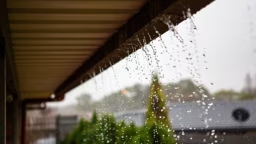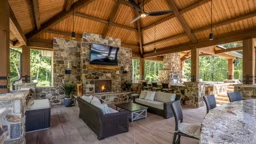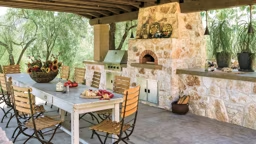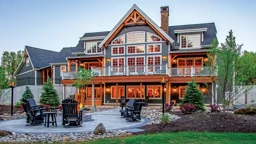
1. Decide Where to Place Your Outdoor Kitchen
Think about the best place to put your outdoor kitchen. For a low-key space, positioning it on a patio or deck that adjoins your primary kitchen makes sense, if you’ll be running inside for seasonings, utensils and other essentials. But if you want a stand-alone, fully loaded, outdoor-cooking arena, there’s no need to duplicate what you already have in such close proximity. In this situation, you’ll be better served to take full advantage of your best view, regardless of how far away it is from the house.
2. Raise the Roof
A roof isn’t necessary for every outdoor kitchen, but if you’re investing in top-of-the-line appliances, you’ll want to protect them. A simple post-and-beam structure can be a great complement to timbers inside your home. Or think about a retractable awning or an adjustable umbrella for more casual cooking centers.
3. Hook Up
It’s a good idea to wire an outdoor kitchen for electricity before construction on your home is done, since it will eliminate the hassle of retrofitting and save you money. A few outlets may be all you think you’ll need, but plan ahead if you want something more elaborate. A plumbing subcontractor can install a water line and sink for you as he’s finishing your interior. And, if you’re going to use a gas-fired grill, hook into your home’s gas main so you’ll never run out of fuel.
4. Materials Matter
Keep materials in mind as you are building an outdoor kitchen. The flooring surrounding your grill should be fireproof—either concrete or flagstone is a safe bet. Stainless steel appliances will withstand rain and snow, and teak is a durable wood option. Ideally, fabrics should be treated with a sun-blocking agent so they’ll stand up to harsh UV rays, and they most definitely should be waterproofed. To test yours, spray the fabric with water. If it doesn’t bead, it could take hours for your seat cushions to dry after a storm—and that would really put a damper on the fun.











